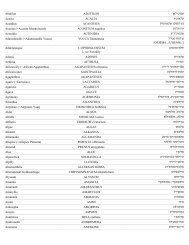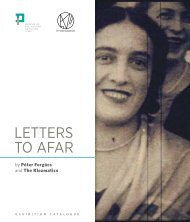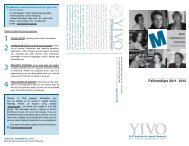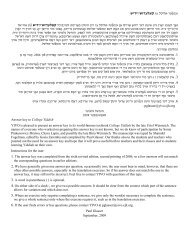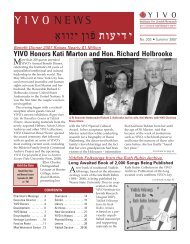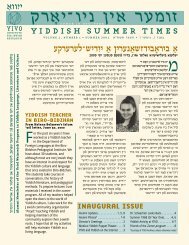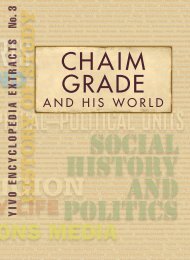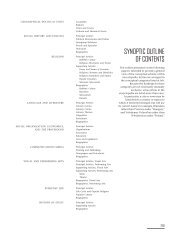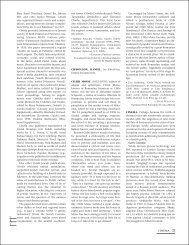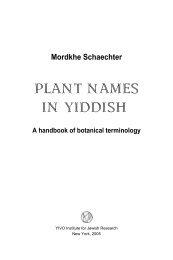Read - YIVO Institute for Jewish Research
Read - YIVO Institute for Jewish Research
Read - YIVO Institute for Jewish Research
You also want an ePaper? Increase the reach of your titles
YUMPU automatically turns print PDFs into web optimized ePapers that Google loves.
<strong>Jewish</strong> Spaces 165that power was concentrated in the hands of the male householders who electedthe kahal, and they shed no tears when it was abolished by Nicholas I in 1844. Aparticularly bitter attack on the corrupt nature of the shtetl oligarchy is to befound in Di takse (The Tax), an early work of Shalom Jacob Abramowitsch(Mendele Mokher Se<strong>for</strong>im).With the new situation that followed the change in Russian government policyafter 1881, writers like Shalom Abramowitsch, Shalom Aleichem, and Isaac LeibPeretz became much more sympathetic to the shtetl; in their eyes it became a<strong>for</strong>tress of <strong>Jewish</strong> values, beleaguered on all sides, which, despite its poverty andapparent primitiveness, preserved within it authentically <strong>Jewish</strong> spiritual values.Nevertheless, not all writers of this period found the shtetl to be a charmingrepository of virtues lost in the city. Bialik’s poem ‘Betshuvosi’ (Upon My Return)is a savage reflection on the suffocating intellectual isolation of the shtetl and ofhis own feelings of being unable to free himself from its prison-like atmosphere.The members of the next generation of Yiddish writers, Sholem Asch, Isaac MeirWeissenberg, and Dovid Bergelson, each had a new and distinctive image of theshtetl. Asch idealized the shtetl, and also described its ‘tough Jews’ with their closerelations with the non-<strong>Jewish</strong> population, Weissenberg highlighted the classantagonisms among shtetl Jews during the revolution of 1905, while Bergelsondescribed the spiritual emptiness of small-town life in the years after the crushingof the 1905 revolution (on this, see Chapter 7).The literary depiction of the non-<strong>Jewish</strong> inhabitants of such towns in the rarecases when they appear in <strong>Jewish</strong> writing is even more stereotypical and exhibits ahigh degree of continuity, from the literature of the Haskalah to that in modernHebrew and Yiddish in the late nineteenth and early twentieth centuries. 3 Whenthese towns were established, the dominant figure was the Polish landowner, theproprietor and often the founder of the town. Yet by the time a fictionalized imageof the shtetl appeared, his power had effectively been done away with (at least inthe tsarist empire) as a consequence of the Russian suppression of the Polishuprisings of 1830 and 1863 and the abolition of serfdom and unfree cultivation.Hebrew and Yiddish literature abound in descriptions, both positive and negative,of the Polish noble owner of the shtetl. In Ayit tsavua (The Hypocrite; 3 pts,1858, 1861, 1864), a novel written in Hebrew by Abraham Mapu, one finds aridiculously romanticized depiction of the salon of a Lithuanian magnate, whereenlightened Poles and Jews meet to discuss Voltaire, philosophy, and the Jews.More frequent is the negative depiction of the landowner which was also wellestablished both in <strong>Jewish</strong> folklore and in hasidic hagiography, where the tsadikwas able to use his powers of intercession to turn aside aristocratic malevolence.This negative image became more pronounced in the post-Haskalah period. Itwas given characteristic articulation in the works of the Yiddish writer Isaac Leib3On this, see Bartal, ‘Non-Jews and Gentile Society in East European Hebrew and YiddishLiterature 1856–1914’.





